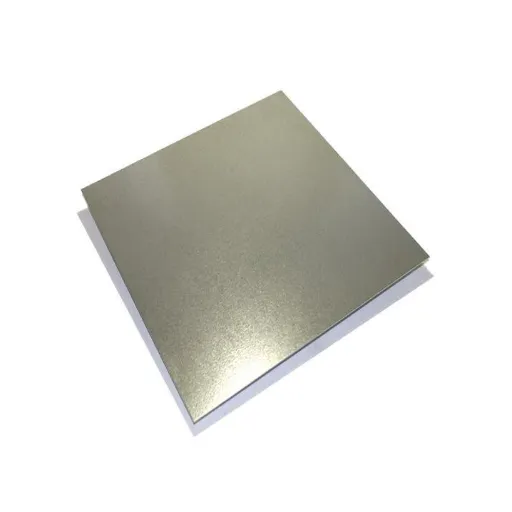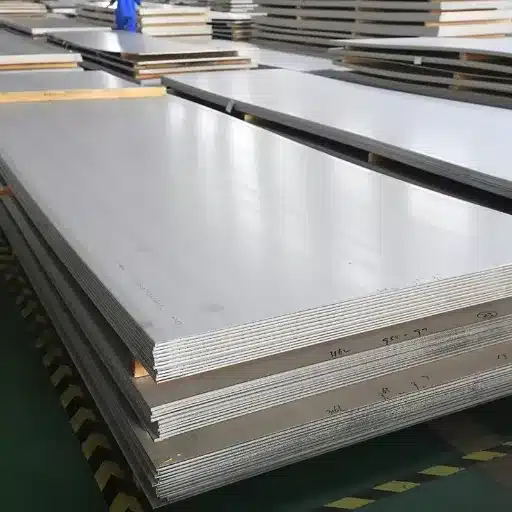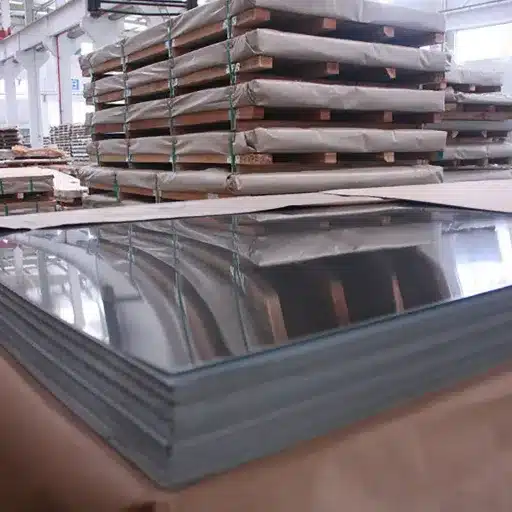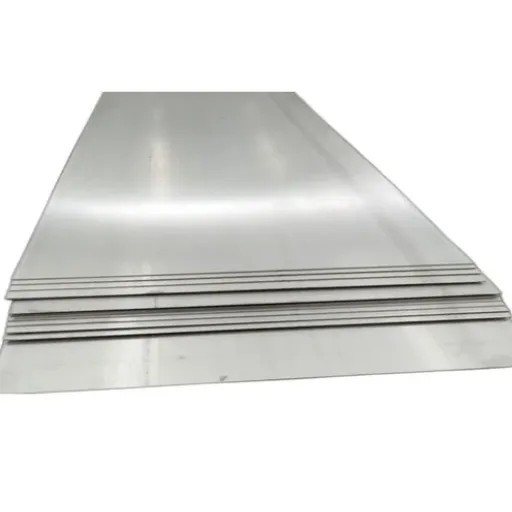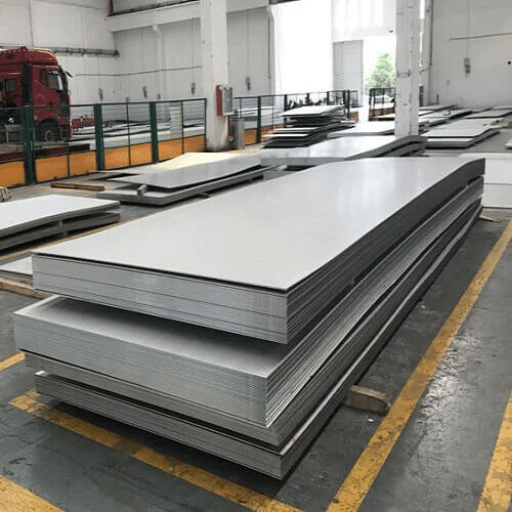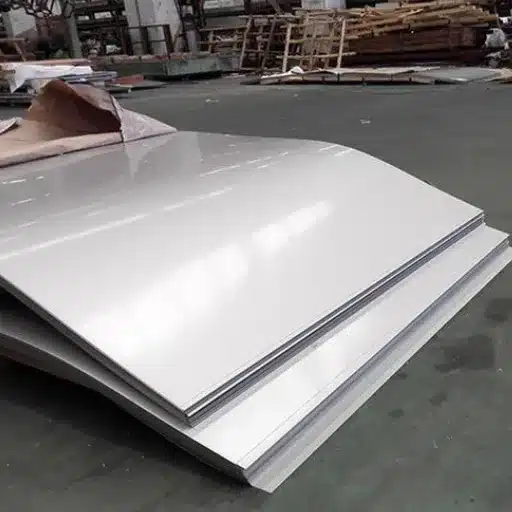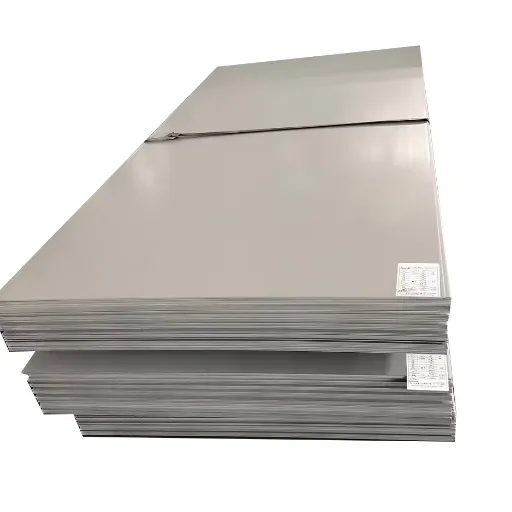Galvanized steel sheets are key players that are treated as standard in various industries due to their long-lasting, rust-resistant, and highly adaptable nature. These strong materials are used everywhere from construction and automotive to household appliances, thus playing a major role in the present-day life of humans. But what parameters exactly make these sheets of galvanized steel so reliable and so much in demand? This write-up unpacks the main characteristics that make them different, discusses their various applications in different industries, and also points out their substantial advantages. Even if you are a well-informed professional in the area or just a person who is interested in the materials that influence our planet, this complete guide is meant to educate and arouse curiosity in you.
Introduction to Galvanized Steel
What is Galvanization?
Galvanization is the term used for the application of a protective layer of zinc to steel or iron, thus stopping rust and corrosion. The zinc coating here acts like an impermeable shield, and as such, it protects the substrate underneath the coating from all environmental factors like water, air, etc. which can slowly erode the material over time. And with that, galvanization has a huge impact on the longevity of steel-made products; it virtually doubles or even triples their life span.
The technique that is most frequently employed for the purpose of galvanization is referred to as hot-dip galvanizing. In this case, the metal, whether steel or iron, is taken for a dip in the molten zinc, resulting in the formation of an extremely powerful and durable joint between the two surfaces. Furthermore, while the zinc coating does protect the steel underneath it, it also imparts sacrificial protection; in the event that the coating gets scratched or impaired, the zinc nearby reacts with the air so as to chemically seal the defect, thus providing the same corrosion protection.
Galvanized steel has gained great appreciation for its advantages, which include reliability, cost-effectiveness, and requiring maintenance which is not time-consuming or often. Its usage is mainly in construction, automotive, and agricultural industries where the need for the material to be durable and resistant to harsh conditions is paramount. These plus points are the reasons why galvanized steel has become a basic material for a wide range of applications in today’s world.
Overview of Galvanized Steel Sheet
Galvanized steel sheet – it’s a kind of steel sheet that gets a zinc layer to prevent corrosion. Usually, this um galvanization process makes the material super strong and resistant even to rust and damages caused by the elements. The zinc covering in the form of a shield is responsible for this; it protects the steel from getting ruined under the surface even if the surface is constantly getting moisture or oxygen.
Galvanized steel sheet is among the most durable materials that can be found. No matter how harsh environmental conditions it can take the punishment and thus it is perfect for use in construction, roofing, and outdoors. Moreover, the zinc-coated steel sheets can hardly be maintained since the coating itself acts as a protector when small scratches or damages happen. This eventually leads to the material having a longer lifespan.
Another important aspect of galvanized steel sheets is their being pocket-friendly. Even though the process of galvanization itself may seem to be costly at the beginning, the savings that go along with it in the long run through maintenance, repair, and replacement reductions make it become a very economical option. The features mentioned above are the reasons why galvanized steel sheets are so common in various industries like construction, automotive, and manufacturing where strength, reliability, and protection against corrosion are critically needed.
Properties of Galvanized Steel
Galvanized steel is characterized by its exceptional resistance to corrosion. The zinc coating along which the galvanization process is carried out is responsible for this property, which acts as a barrier not allowing moisture and oxygen to reach the metal, thus eliminating the possibility of rust. Besides, the zinc coating offers cathodic protection; therefore, it can even protect the areas that are in contact with the metal due to the coating’s wear and tear or damage.
Durability is another significant attribute of galvanized steel. The coating bonds so firmly to the steel surface that it can continue to perform under harsh environmental conditions for a very long time. This is particularly advantageous for outdoor structures, industrial, and moisture- or humid-exposed locations. The combination of strength and toughness ensures that the material will not lose its character over time.
Finally, galvanized steel is very adaptable and economically priced. It simply fits into any project where it will not change the finish even if it undergoes various forming, fabricating, and welding processes. However, the initial investment may be slightly higher due to zinc application, but the long-term savings resulting from fewer maintenance and replacements make it an extremely affordable and eco-friendly alternative for construction, automotive, and manufacturing industries. These characteristics together render galvanized steel an essential material for realizing both dependability and durability in diverse applications.
Applications of Galvanized Steel Sheets
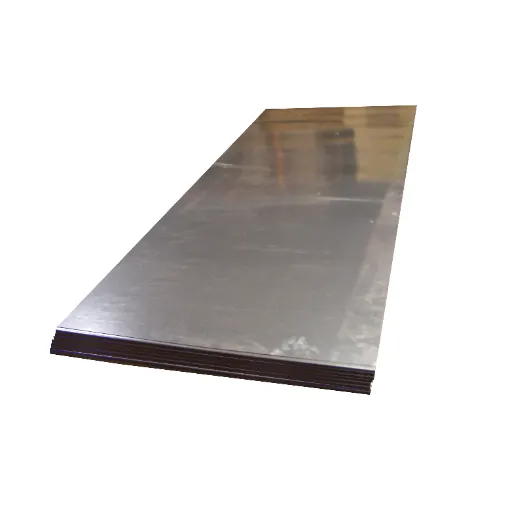
Construction Industry Uses
The construction industry heavily relies on galvanized steel sheets because of their great features like durability, resistance to corrosion, and being cost-effective. They are used in a multitude of ways for building and infrastructure that require the assuredness of longevity and structural integrity. Some of the most important applications of galvanized steel sheets in the construction area are:
- Roofing and Cladding: Galvanized steel sheets are roof and wall cladding materials to highest level. The property of their coating to resist corrosion gives and protects them from the nasty weather thereby guaranteeing long life spans with little-maintenance.
- Structural Framework: The nice and dependable character of galvanized steel makes it to fit for structural frameworks of buildings like beams, columns, and trusses. The components highlighted here reap the benefits from the material’s property to bear big weights and fight the battle against the environment stresses.
- Fencing and Barriers: Galvanized steel sheets are elastically and strongly used to make long-lasting fences, railings, and barriers. Their rust and wear resistance feature makes them the perfect candidate for both home and business security applications.
- HVAC Ducting: Heating, ventilation, and air conditioning (HVAC) systems have been using galvanized steel sheets for ducts because of their resistance to corrosion and easy-to-fabrication properties. That’s why airflow is ensured efficiently but with long operational lives.
- Bridges and Roadways: Galvanized steel sheets play a very important role in the making of bridges and road barriers. Their power to withstand corrosion due to environmental factors like moisture and pollutants not only increases the infrastructure’s safety but also its permanence.
These various applications of steel highlight that the indispensable steel in the construction process has been galvanized only which makes the structures durable, safe, and long-lasting.
Automotive and Transportation Applications
Galvanized steel sheets are considered to be the most important materials in the automotive and transportation sectors because of their strength, durability, and anticorrosive property. Not only do these applications contribute to the safety of vehicles but they also provide an increased life span of vehicles making it a cost-saving approach for the manufacturers. Here are the five main applications of galvanized steel sheets in these industries:
- Body panels and frames: Galvanized steel is the main metal used to produce car body panels and frames and thus provides great protection against rust and increases the life span of a vehicle, even in extreme conditions.
- Exhaust Systems: The long-lasting nature of galvanized steel allows it to be used for exhaust systems because it will not be affected by moisture, acidic/alkaline chemicals, or high temperatures.
- Fuel Tanks: Galvanized steel sheets are frequently used for the manufacture of fuel tanks due to their excellent durability and resistance to corrosion caused by fuel and outside sources.
- Railroad Components: Galvanized steel is used for the construction of railroad tracks, cars, etc. because it can withstand the elements and heavy loads for a longer time.
- Shipping containers: The walls of the shipping containers are made of galvanized steel sheets which ensure that they remain strong and not rusty even after being exposed to sea and land transportation for a long time and under extreme conditions.
The mentioned applications highlight the great importance that galvanized steel sheets have in maintaining the reliability and life spans of different automotive and transportation sectors.
Industrial Uses of Galvanized Steel Sheets
Galvanized steel sheets are the mainstay of many industries thanks to their long-lasting nature, strong resistance to rust, and low prices. These sheets are a significant part of the infrastructure and daily operations of different kinds of businesses. Five industrial uses of galvanized steel sheets are highlighted as follows:
- Construction and Building Materials: Galvanized steel sheets are essential in making roofs, walls, and structural systems. Their resistance to corrosion ensures that the sheets will last long, even under extreme weather. Industry statistics reveal that construction alone accounts for more than half of the total galvanized steel consumption worldwide.
- HVAC Systems: The heating, ventilation, and air conditioning (HVAC) systems have galvanized steel as one of their main materials due to its strength and resistance to rust. The use of this material prolongs ductwork and moisture-containing components’ efficiency and lifespan.
- Electrical Equipment Enclosures: Galvanized steel is a material of choice for industrial control panels and electrical enclosures due to its cost-effectiveness and durability. The zinc layer acts as a shield against the elements, allowing safety and optimal performance of the equipment.
- Agricultural Equipment and Structures: Steel sheets, which are galvanized, find their way into making silos for storing grains, fences, and irrigations systems. With their weather and chemical resistance, they are most suitable for agricultural environments. Research indicates that their usage contributes to a reduction in total maintenance costs of agricultural structures.
- Telecommunication Equipment: The telecommunication industry makes use of galvanized steel when it comes to the manufacturing of towers, poles and enclosures, as it is one of the main factors that enhance the durability of these installations outdoors. These materials provide protection against the corrosion caused by the constant and varying environmental factors such as wind, rain, and others.
These applications show the flexibility and indispensable nature of galvanized steel sheets in industrial environments, leading to more efficient, safer, and less costly maintenance operations.
Benefits of Using Galvanized Steel Sheets
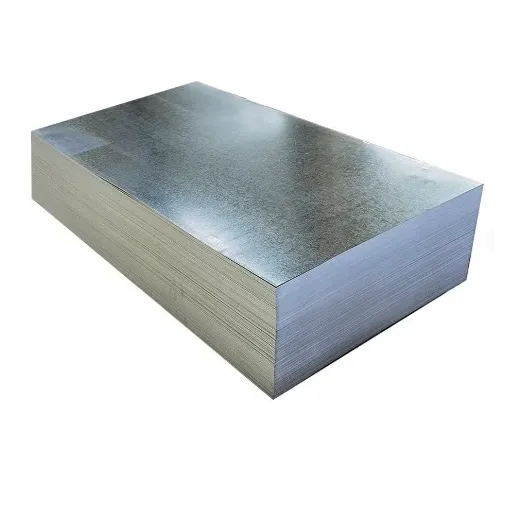
Durability and Longevity
The galvanized steel sheets have a remarkable longevity and resistance to wear that qualifies them for the toughest industrial and outdoor applications. The metal is protected from the elements by the zinc coating that is applied during the galvanization process, which ensures the performance of the metal even in the most hostile environmental conditions. Here are five major aspects and figures that highlight these features:
- Corrosion Resistance – Depending on the exposure, galvanized steel can give up to 50-70 years of protection in rural areas and 20-50 years in more aggressive urban or coastal settings.
- Low Maintenance – The zinc coating acts as a barrier to typical corrosion, so the galvanized steel can be left alone for a long time, therefore, reducing the long-term costs considerably.
- Impact Resistance – The coating is not only resistant to degeneration but also tough enough to endure physical damage such as impacts or abrasions that are generally found in industrial use.
- Temperature Tolerance – Galvanized steel can take the heat and cold without losing its strength or becoming prone to deterioration in hot and cold climates.
- Self-Healing Properties – The small cuts or scratches in the zinc coating can be healed by the zinc’s natural interaction with moisture and oxygen reacting, thus extending the life of the steel further.
All the above qualities combined make the galvanized steel sheets a very good investment for projects that need dependability for a long time.
Corrosion Resistance and Protection
The corrosion resistance property of galvanized steel is a characteristic mainly that wins its recognition, the material’s life in harsh conditions is prolonged drastically. Below five points are presented to accentuate its resistance to corrosion and protection qualities:
- Zinc Coating Barrier – The zinc coating layer mainly covering galvanized steel acts as a physical barrier, preventing the underlying steel from being in contact with moisture, air, and corrosive elements.
- Cathodic Protection – The zinc coating has a protection level of the steel underneath but if the coating is completely removed then still the zinc continues to guard the steel underneath by cathodic action, doing this through the sacrificial method of not allowing the steel to acquire the rust.
- Uniform Coverage – The sheets of galvanized steel provide a shield that is equally distributed throughout, so the corners, edges, and even places that are difficult to be seen and where untreated materials get corroded, are all treated.
- Resistance to Humidity and Salt – Galvanized steel has the advantage of living with the zinc coating even in humid environments and places that are prone to salt, like seaside areas, where the risk of corrosion is higher.
- Tested Longevity – Life use confirm that galvanized steel could endure absolutely more than 50 years in typical rural settings and the least 20-25 years in more extreme exposures: industrial or coastal regions.
Cumulatively, these factors position galvanized steel as no other material in the application of resistance and corrosion through the factor of quality.
Cost-Effectiveness in the Long Run
Galvanized steel has a long-lasting and robust quality, but at the same time, it is very economical and cost-effective in the long run, thanks to its minimal maintenance and a very long service life. The case of galvanized steel versus the case of other materials in terms of replacement, repairs, and even maintenance can be a very fast return on investment. Here are five ways that show it is cost-effective in detail:
- Minimal maintenance costs – Galvanized steel maintenance mostly amounts to zero, and this, in turn, significantly reduces the ongoing expenditure of maintenance. For example, the installations of protective coatings can last for thirty years or more without having to be retouched, unlike non-galvanized metals that may need yearly painting or treatments.
- Reduced replacement frequency – The lifespan of galvanized steel is longer with over 50 years in rural areas and 20-25 years in more hostile environments. Consequently, substituting the structures made with galvanized steel becomes less frequent.
- Lower initial investment compared to other coatings – Galvanized steel, when considering the total lifecycle costs, is often a cheaper alternative to the protective coating methods like stainless steel or more intensive paint systems.
- Resistance to damage reduces direct repair costs – The galvanizing process zinc coating gives a tough barrier that resists physical damage, and thus repair costs from environmental stress or accidents are reduced.
- Fast installation time saves labor costs – Galvanized steel comes ready to use right after purchase with no need for additional, such as surface cleaning or painting, and this leads to a saving of labor time and costs during construction projects.
All these reasons together make sure that galvanized steel is an economical as well as a practical solution for various applications, and its lifetime value is really high.
Comparison with Other Materials
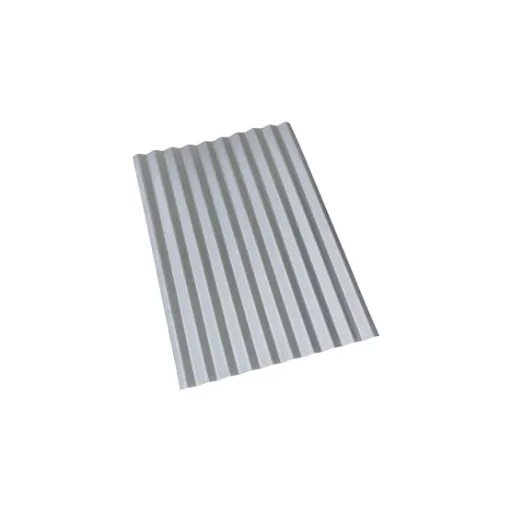
Galvanized Steel vs. Aluminum
Steel that has undergone the galvanizing process provides the best strength and longevity, whereas, on the other hand, aluminum is the perfect material for the lightest constructions, and at the same time, it has high resistance to oxidation.
| Key Point | Galvanized Steel | Aluminum |
|---|---|---|
| Weight | Heavy | Lightweight |
| Strength | High | Moderate |
| Corrosion | Zinc-coated | Oxide layer |
| Cost | Lower upfront | Higher upfront |
| Durability | Long-lasting | Less maintenance |
| Conductivity | Low | High |
| Flexibility | Moderate | High |
| Usage | Structural | Aerospace, etc. |
Strength and Weight Comparisons
One of the main differences between galvanized steel and aluminum is their strength-to-weight ratios. Galvanized steel is much stronger and stiffer than aluminum, which is why it is used in construction where high load-bearing capacity is a critical factor. For instance, in the case of construction projects such as bridges, towers, and industrial frameworks, galvanized steel assures through its superior strength the resistance to mechanical stress and durability.
On the contrary, aluminum is significantly lighter than galvanized steel. This can be a great advantage for those applications where weight reduction is essential like in the case of aerospace or automotive industries. Moreover, despite being very light, aluminum does not possess the absolute tensile strength and rigidity of galvanized steel, so it is not very suitable for heavy-duty applications. Nevertheless, aluminum does have a very good property of corrosion resistance owing to its natural oxide layer, which, in turn, adds to its lighter weight for keeping in moist environments.
In conclusion, the decision about the use of either galvanized steel or aluminum depends on the project’s specific requirements, on the one hand, and on the other, it is a matter of balancing the need for strength, weight, and environmental resistance.
Cost-Benefit Analysis
Galvanized steel and aluminum have different costs and advantages which need to be carefully weighed for every specific application. Generally, galvanized steel has a lower cost per unit than aluminum which makes it the more economical choice in large projects where the material is used a lot. But the lower cost of steel also means that transportation and installation will be more expensive because of the steel’s heavier weight. On the other hand, the steel’s strong tensile strength gives it an edge over the other in terms of life span in the case of structural applications which means that the company will not incur recurring maintenance costs for quite some time.
Aluminum is costly when compared to galvanized steel but the latter is often cheaper in the long run due to higher metal recycling prices and lower maintenance costs such as labor and treatments. For example, in the aerospace or marine industry the weight of aluminium results in better fuel economy and thus higher price is partially compensated. Additionally, there are other industries where generally the cost burden is lightened by the active recyclability of the metal which indirectly contributes to the project’s sustainability aspect and brings about the possibility of getting back some value from the alloy at the end of its useful life.
In the end, one needs to weigh galvanized steel versus aluminum by analyzing the total cost of ownership, which now includes initial cost, savings from operating efficiency, and time required before replacement for the given application. Careful examination of factors will help companies to strike a balance between the projected short-term budget constraints and the promised long-term performance benefits.
Future Trends in Galvanized Steel Sheet Usage
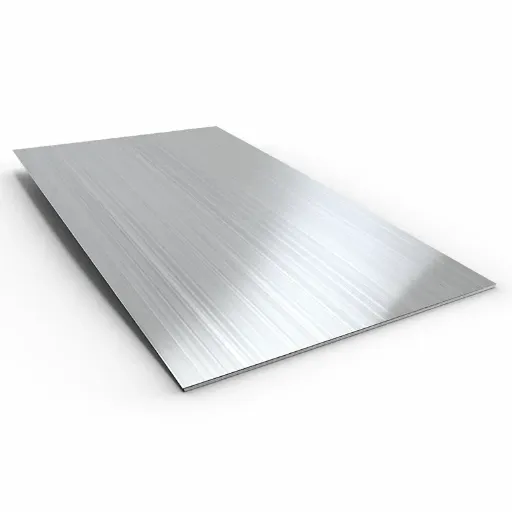
Innovations in Coating Technologies
The new coating technologies for galvanized steel sheets are seriously developing the performance and versatility of the steel sheets. The recent innovations are mainly directed towards the corrosion resistance through the use of eco-friendly and high-durability coatings. The newly formed coatings not only add years to the steel but also save money on upkeep, thereby, making them most preferred in the construction, automotive, and industrial sectors where the demand for such applications is very high.
In my opinion, the movement towards sustainable coating processes is really the most impressive one. Research into chromium-free coatings for instance, is eliminating the environmental and safety issues while giving a protective quality that is as good as that of chrome. The use of self-healing coatings is another case in point, a major breakthrough as they heal even very small scratches or damages automatically, thus, securing the material’s integrity without needing the usual extensive interventions.
The new developments in the coatings are very important as they allow the steel to easily adapt to the changing environmental laws and market expectations. By giving the steel sheets a longer life by the use of better coatings and at the same time practicing environmental sustainability, the innovators have made it possible for the steel sheets to come out as the most reliable material for a variety of applications in the future and be very flexible in the same regard.
Increasing Demand in Sustainable Construction
The increased concern about climate change and environmental sustainability across the world has had a big influence on the construction sector, and the eco-friendly materials and methods are the most notable options. Sustainable construction aims at making less pollution, reducing waste, and using resources more effectively, which is the main reason why the choice of the materials is shifting toward the ones that support these goals. Galvanized steel being corrosion-resistant and recyclable is considered one of the critical materials for sustainable buildings. The long-term resistance to corrosion of this material has a significant effect on the life-span of the buildings, as there is no need for the constant repairing or replacing which, in turn, cuts down on the consumption of materials.
Sustainability in construction is being pushed harder globally by governments and regulatory bodies. They are imposing tougher environmental rules and offering green building certifications like LEED (Leadership in Energy and Environmental Design) as incentives for the use of sustainable materials. Galvanized steel is providing a very good option with its processes that have been constantly improved for energy efficiency and reduction of greenhouse gas emissions. Moreover, the flexibility of the galvanized steel sheets opens the door for architects and builders who want to make a statement with the looks and at the same time care about the environment.
The trend in the market is likely to keep the demand for galvanized steel sheets on a rise, especially in sectors like infrastructure, residential housing, and renewable energy projects. For example, the use of solar panels in building design cases often leads to the choice of galvanized steel for the structures that support them, given the strength and resistance to bad weather of this steel. Likewise, urban green projects are using galvanized steel for the construction of bridges, energy-efficient facades, and ventilation systems. These instances are clear that the material is not just fulfilling the sustainability part of the industry requirements, but also, it is taking the part of modern construction. The construction industry has chosen eco-friendly steel innovations as their mainstay, hence galvanized steel will continue to be the mainstay of such green initiatives in the future.
References
-
MIT – Resistance Spot Welding of Galvanized Steel Sheet
This study explores the challenges and properties of welding galvanized steel sheets. -
Colorado School of Mines – Friction Effects on Galvanized Sheet Steel Formability
This research investigates the formability of electrogalvanized and hot-dipped galvanized steel sheets. -
Academia.edu – Mechanical Properties of Hot Dip Galvanized Steel and Galvalume
This paper examines the mechanical properties and coating effects on galvanized steel sheets. - Click here to read more.
Frequently Asked Questions (FAQ)
Q: What is a galvanized metal sheet?
A: A galvanized metal sheet is basically a steel sheet that has gone through a galvanization process and thus ovulated a zinc layer around it. This coating acts as a shield around the steel and this not only makes the steel more durable but also resistant to corrosion therefore its usage in such instances where steel is commonly used such as construction and outdoor fittings is not a problem.
Q: What are the advantages of using galvanized steel sheets?
A: Galvanized steel sheets have tons of advantages including a very high resistance to corrosion so the steel will not rust and the environment will not affect the steel sheet’s quality. Also, they will last much longer than regular steel, you can have them cut according to your specifications, and you can select the thickness and gauge that will suit your needs. Thus, they can be used in applications from simple to complex.
Q: How is a galvanized sheet different from regular steel?
A: There is a big difference between a galvanized sheet and regular steel; the latter’s main distinguishing feature is the non-application of the protective zinc coating. Regular steel gets affected by rust and corrosion in wet areas, whereas a galvanized sheet is immersed in the atmosphere albeit with a prolonged life due to its outdoor application.
Q: Can galvanized metal sheets be cut to size?
A: Certainly, the sheets made of galvanized metal can be cut to the required size by laser cutting or any of the other methods that are available. This kind of tailor-made service or fitting sheets ensures that the desired dimensions for structural elements or decorative uses match exactly.
Q: What thickness options are available for galvanized steel sheets?
A: Galvanized steel sheets come in a variety of thickness options, typically measured in gauges. The thickness you choose will depend upon the intended application, with thicker sheets providing greater strength and durability for structural purposes.
Q: Are galvanized sheets suitable for decorative applications?
A: The answer is yes, the usage of galvanized sheets is not limited to just decorative purposes. The color and the texture of the finish apart from the durable property of the finish together make them the first choice in architectural designs, furniture, and other artistic works where aesthetics as well as practical aspects are equally prioritised.
Q: What is the process of galvanization?
A: The process of galvanization consists of dipping the steel into a hot-dip furnace filled with molten zinc. The process is so thorough that when it is done it is guaranteed that the zinc and the steel have developed a very strong bond which in turn creates a protective layer around the steel making it resistant to corrosion and giving it longevity.
Q: How do you maintain galvanized metal sheets?
A: Maintenance of galvanized metal sheets involves constant checking of the surface so that if there are any chips or scratches that may have compromised the protective layer, they can be treated straight away. Washing with mild soaps and avoiding harsh chemicals can help maintain their surface finish and hence contribute to long-lasting performance.
Q: What types of applications are best suited for galvanized metal sheets?
A: One of the top application areas for galvanized metal sheets is roofing, siding, automobile parts, and in construction as a part of the building’s structural support. The property of corrosion resistance that these sheets possess makes them fit for both indoor and outdoor use though the indoor use is highly recommended in environments with high humidity.
Q: What is the cost of galvanized steel sheet per square foot?
A: The price of galvanized steel sheet varies quite a lot depending on the different factors such as the thickness, gauge, and also market factors. On an average basis, the prices are between a few to several dollars per square foot, the price depending on various specifications such as whether the sheets are of custom sizes or regular sizes, etc.

